Every week, we provide you with new and free Divi layout packs which you can use for your next project. For one of the layout packs, we also share a use case that’ll help you take your website to the next level.
This week, as part of our ongoing Divi design initiative, we’re going to show you how to create a swipe menu bar for your website using the Mortgage Broker Layout Pack. This is a great way to add interaction to your website. You’ll have the same user experience across all screen sizes and you can use this technique for any kind of website you’re building.
Let’s get to it!
Preview
Before we dive into the tutorial, let’s take a quick look at the outcome across different screen sizes.
Desktop
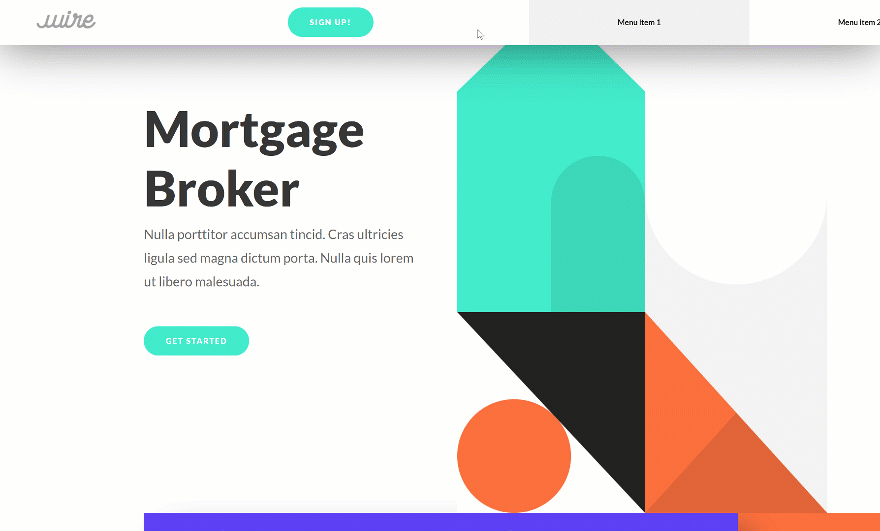
Mobile
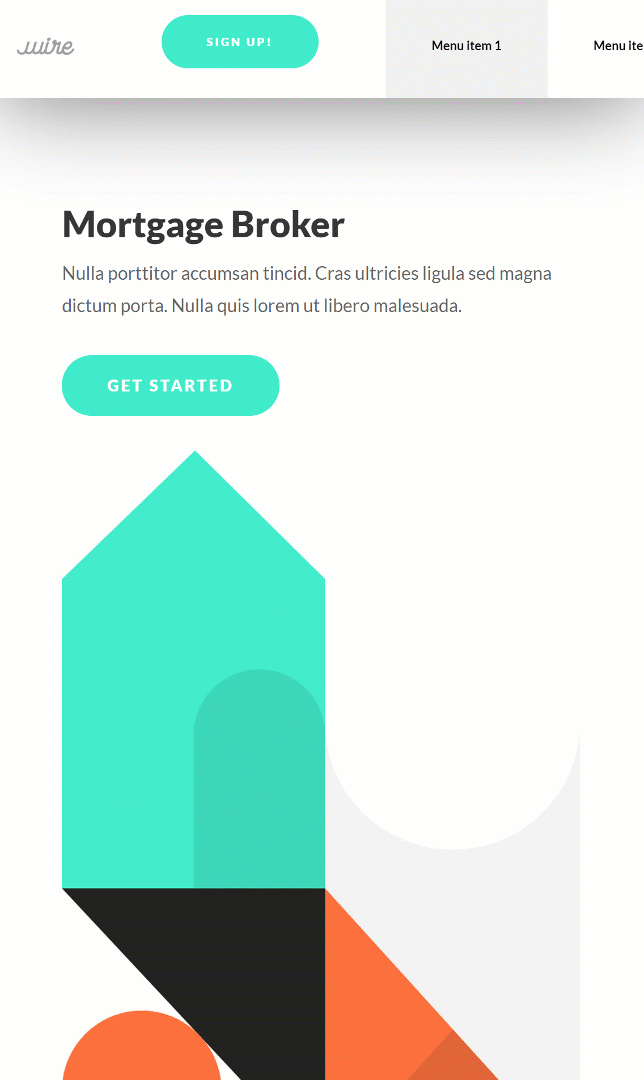
Disable Fixed Navigation in Divi Theme Options
Go to Divi Theme Options
Let’s get started! The first thing you’ll need to do is go to the Divi theme options on your WordPress website.
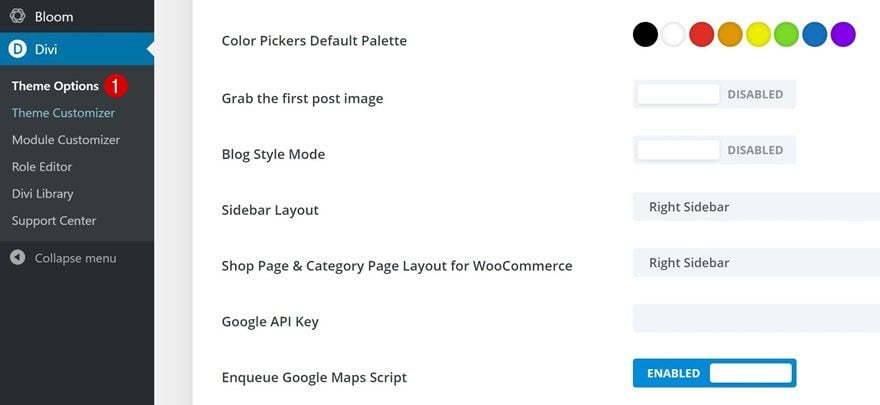
Disable Fixed Navigation
Here, we’re going to disable the fixed navigation bar. We need to disable this option in order to completely get rid of the primary menu bar on our page later on this tutorial.
- Fixed Navigation Bar: Disabled
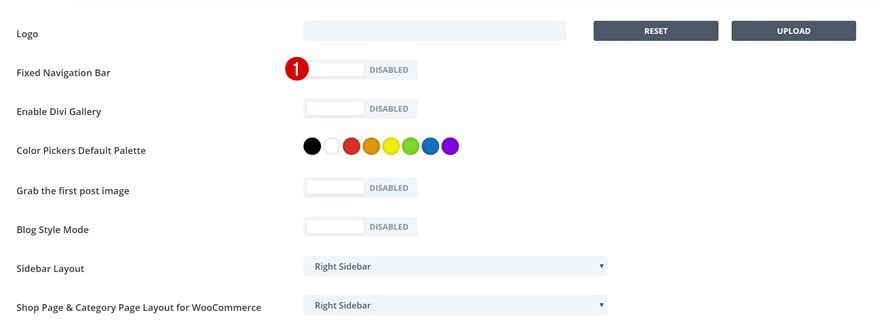
Hide Primary Menu Bar on Page
Enable Visual Builder on Mortgage Broker Layout Pack Landing Page
Continue by going to the page you’ve created using the Mortgage Broker Layout Pack‘s landing page and enable the Visual Builder.
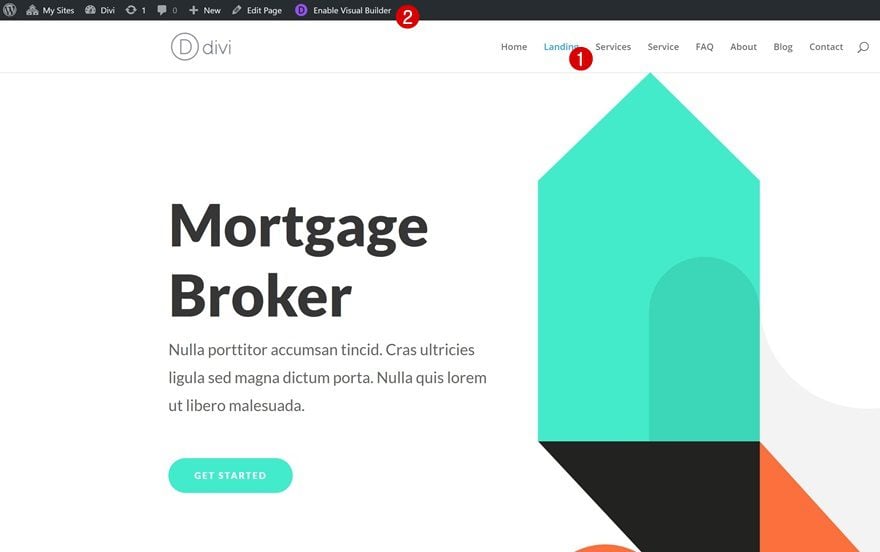
Open Page Settings
We’re going to hide the primary menu bar on our page by adding some CSS code. To add this code, open the page settings.
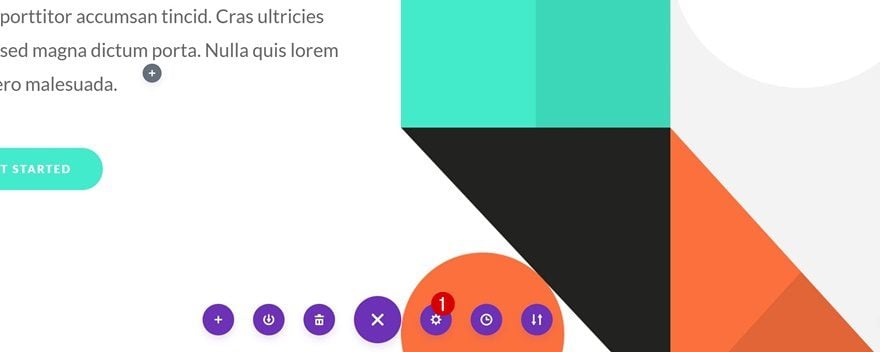
Add Custom CSS Code to Hide Primary Menu Bar
Then, go to the advanced tab and place the following lines of CSS code in the Custom CSS box:
#main-header {
display: none;
}
Adding this code will help prevent the primary menu bar from showing up on the page.
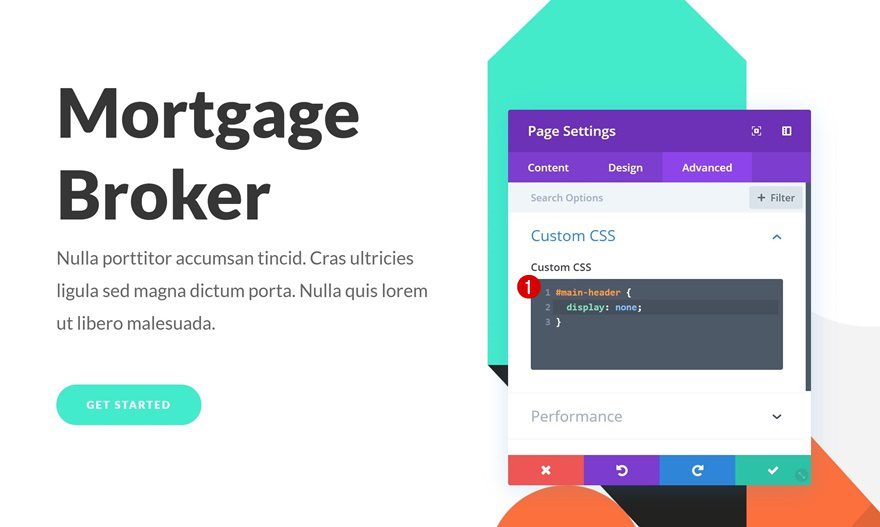
Create Custom Menu Design with Divi
Make Sure There’s Enough Top Padding in Hero Section Across All Screen Sizes
Now that we’ve gotten rid of the primary menu bar on our page, we can start adding the swipe menu bar instead! The first thing you’ll need to do is make sure that there’s enough padding at the top of your page so the swipe menu bar won’t overlap any existing content. For the Mortgage Broker Layout Pack’s landing page in particular, that means making sure the column 1 custom padding remains ‘180px’ across all screen sizes.
- Top Padding: 180px
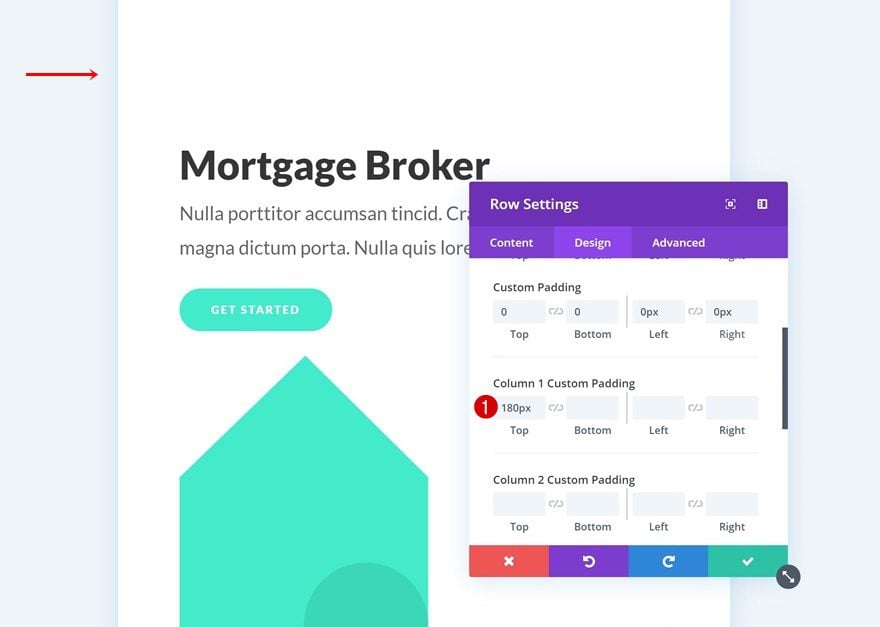
Add New Regular Section to Bottom of Page
Time to start creating the custom swipe menu bar! Add a regular section to the bottom of your page.
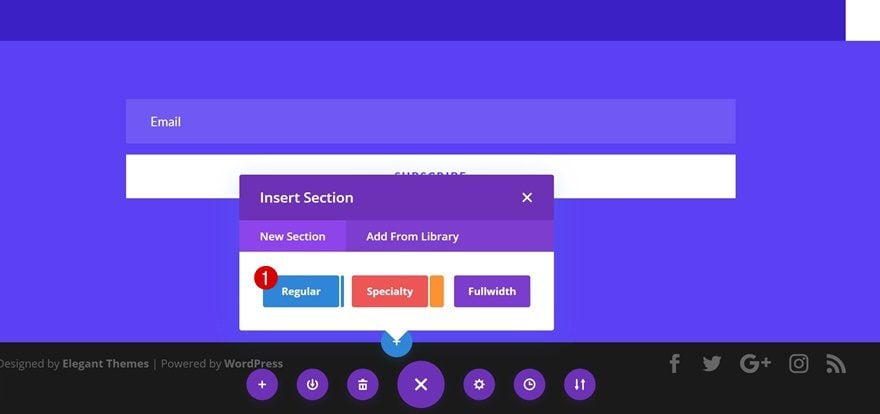
Spacing
Open the section settings and remove all the default top and bottom padding.
- Top Padding: 0px
- Bottom Padding: 0px
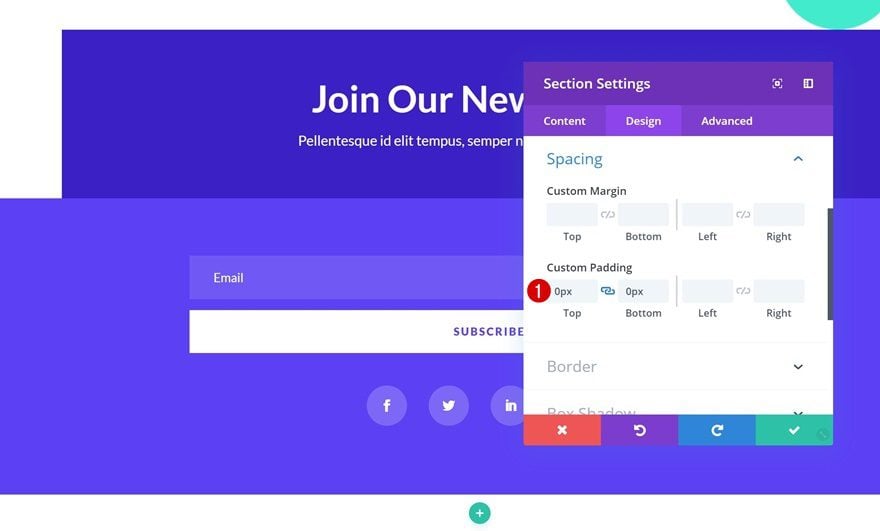
Add Row
Column Structure
Continue by adding a new row using the following column structure:
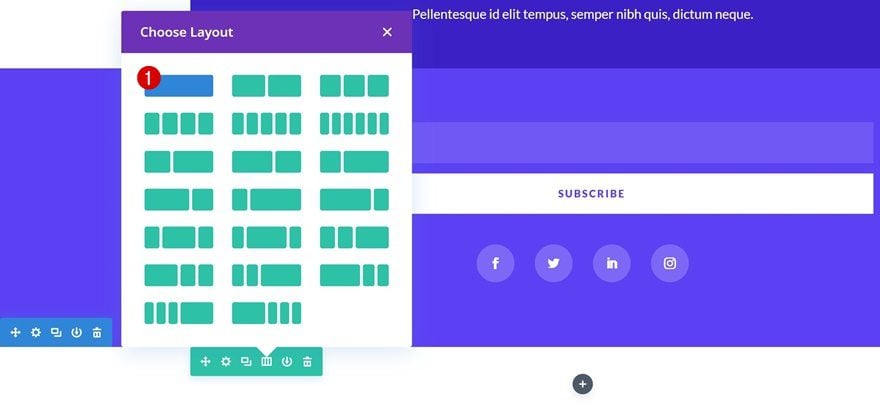
Background Color
Open the row settings and change the row background color into white.
- Background Color: #ffffff
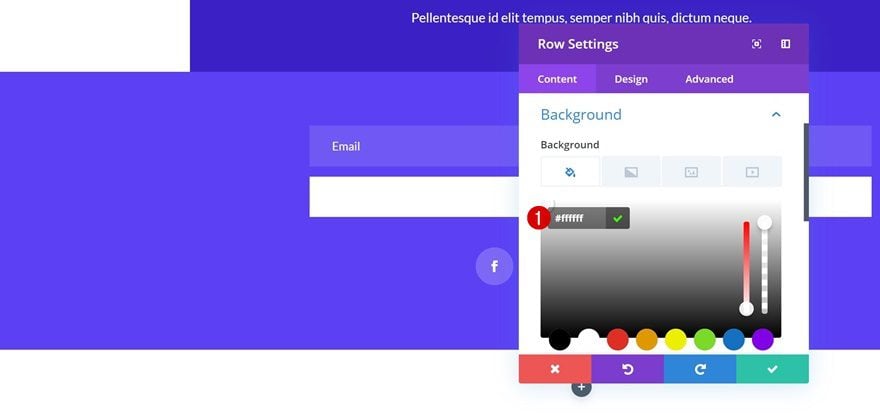
Sizing
Then, open the row settings and change the sizing settings to allow the row to take up the entire width of the screen:
- Use Custom Gutter Width: Yes
- Gutter Width: 1
- Width: 100%
- Max Width: 100%
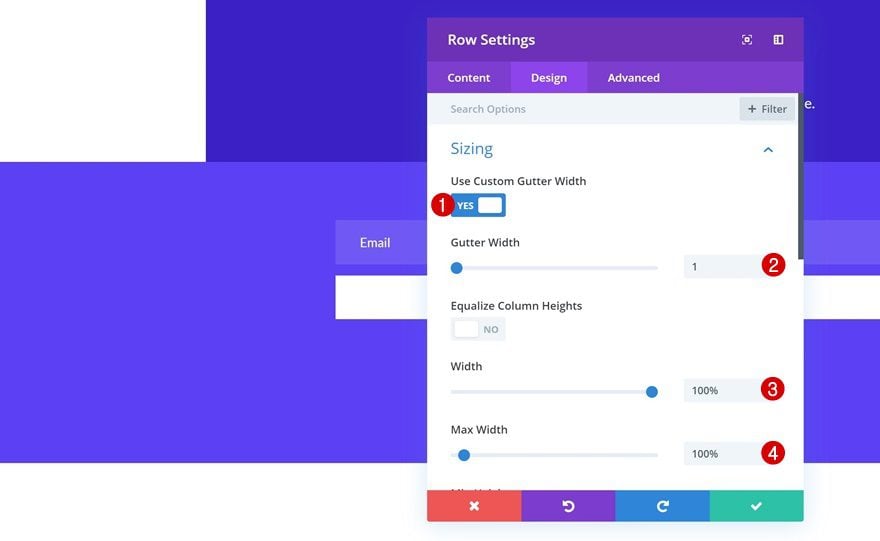
Spacing
Remove all top and bottom padding next.
- Top Padding: 0px
- Bottom Padding: 0px
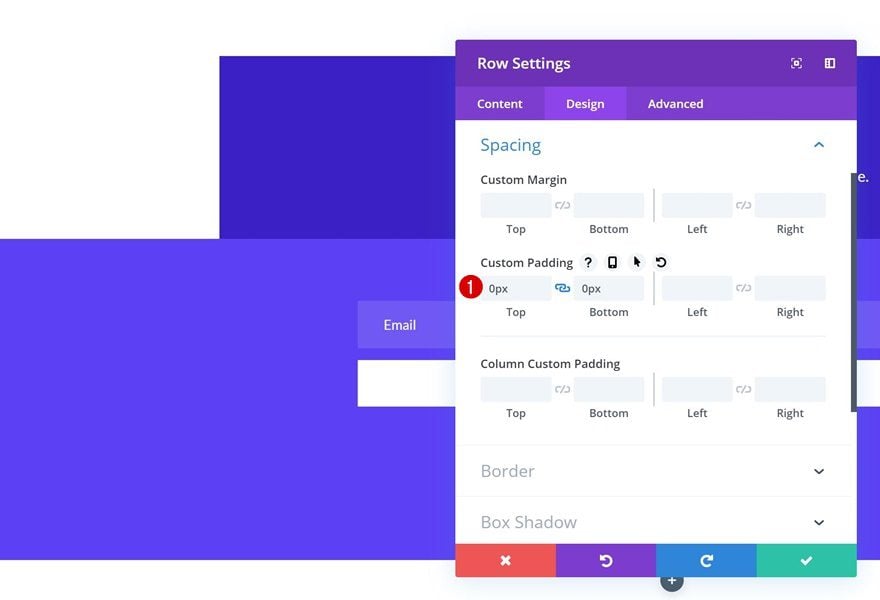
Box Shadow
And to make sure there’s enough depth between the swipe menu bar and the page itself, we’re going to add a box shadow.
- Box Shadow Blur Strength: 80px
- Shadow Color: rgba(0,0,0,0.55)
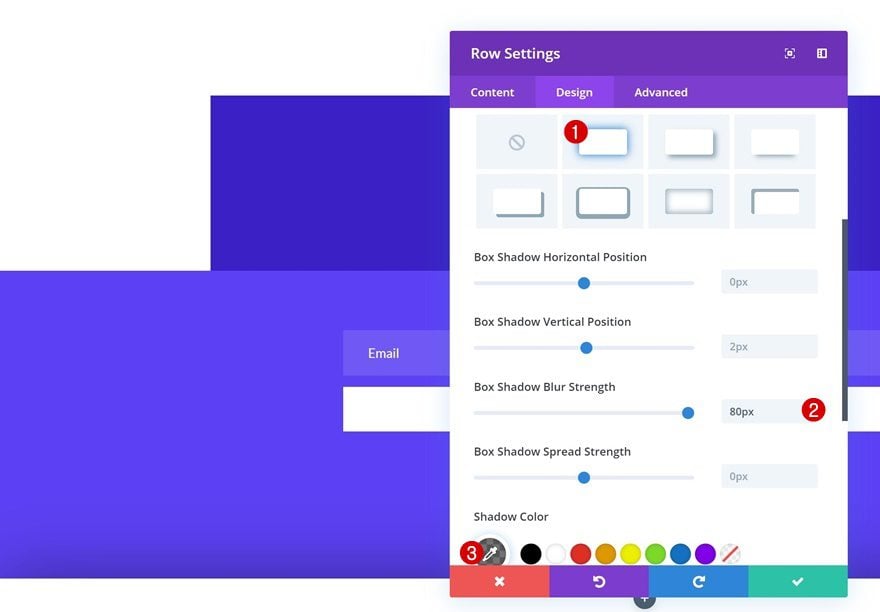
Add Image Module
Upload Company Logo
Time to start adding all the modules we want to show up in the swipe menu bar, starting with an Image Module. Upload your logo using an image file with 226px width and 100px height.
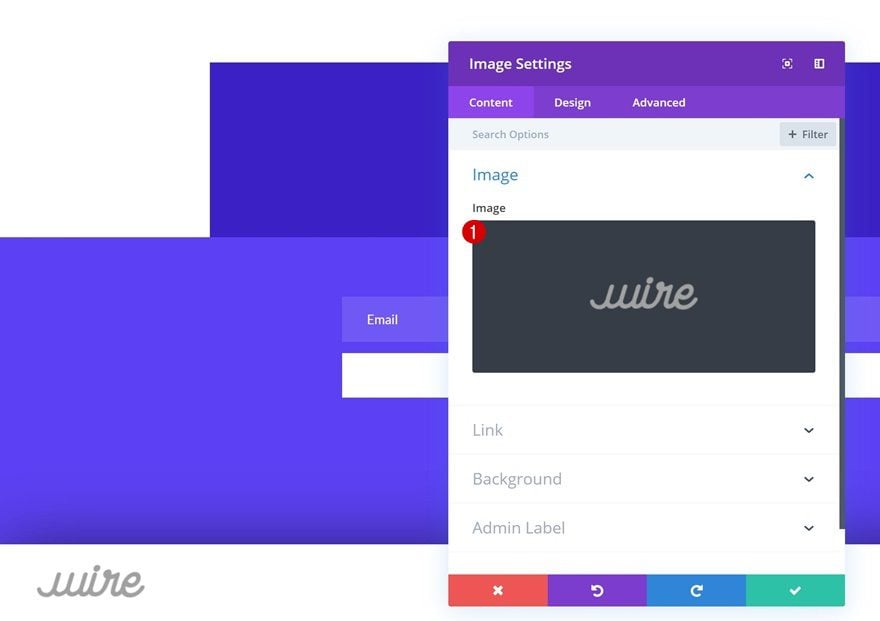
Alignment
Then, go to the design tab of the Image Module and change the image alignment.
- Image Alignment: Center
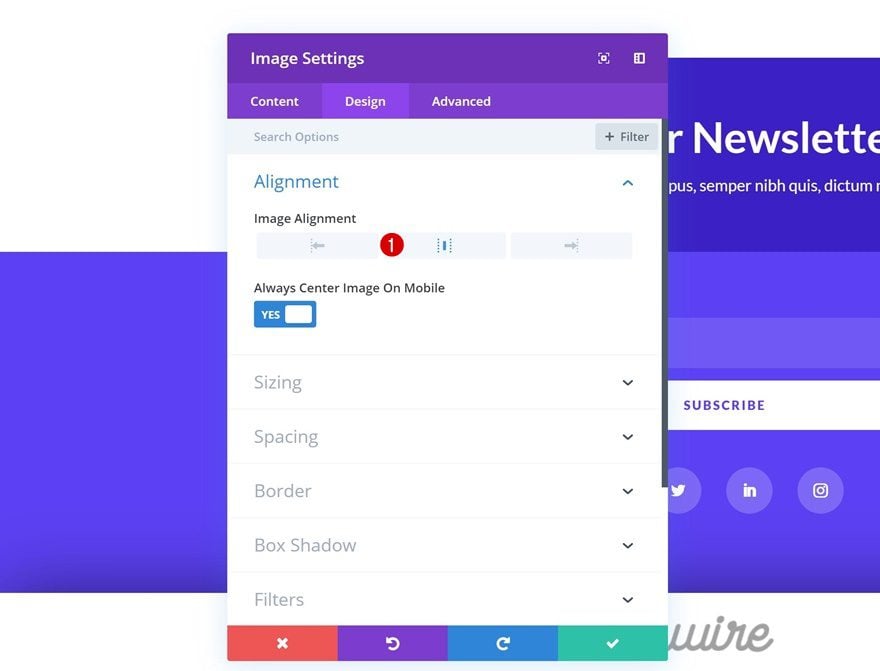
Sizing
Change the sizing settings of the image next.
- Max Width: 75% (Desktop), 100% (Tablet & Phone)
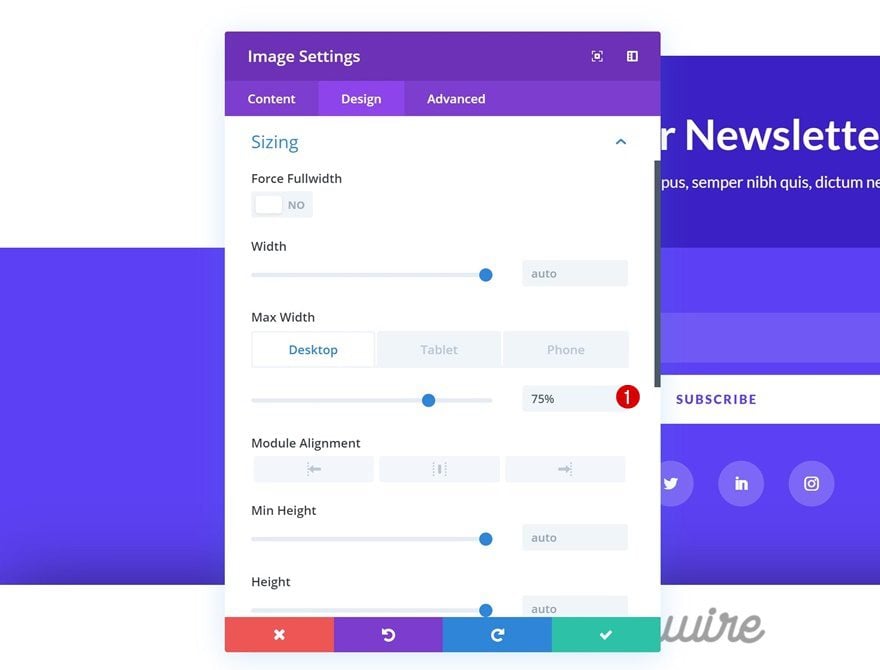
Spacing
And add some custom top and bottom padding to the image as well.
- Top Padding: 15px (Tablet), 25px (Phone)
- Bottom Padding: 15px (Tablet), 25px (Phone)
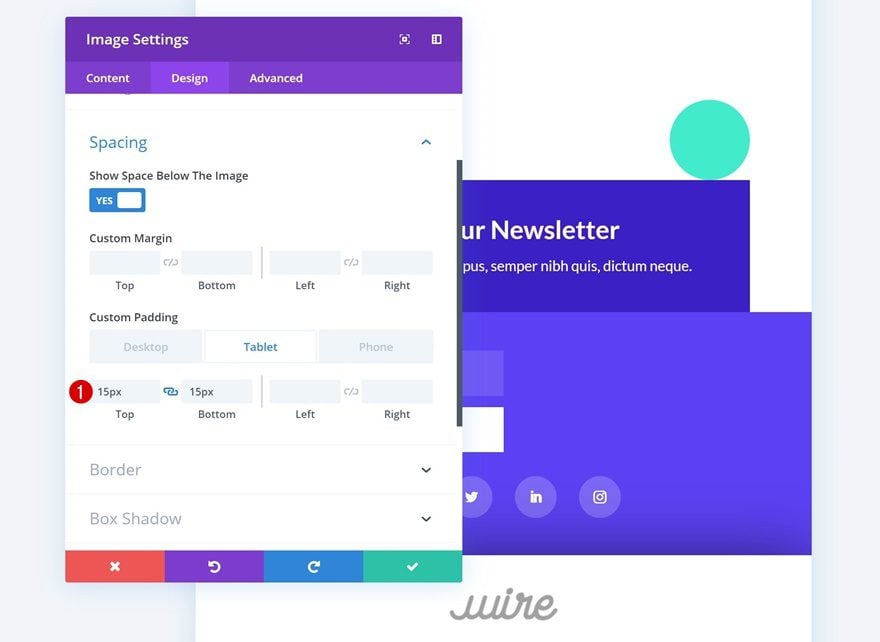
Add Button Module
Add Copy
The second module we need is a Button Module. Add some copy of your choice.
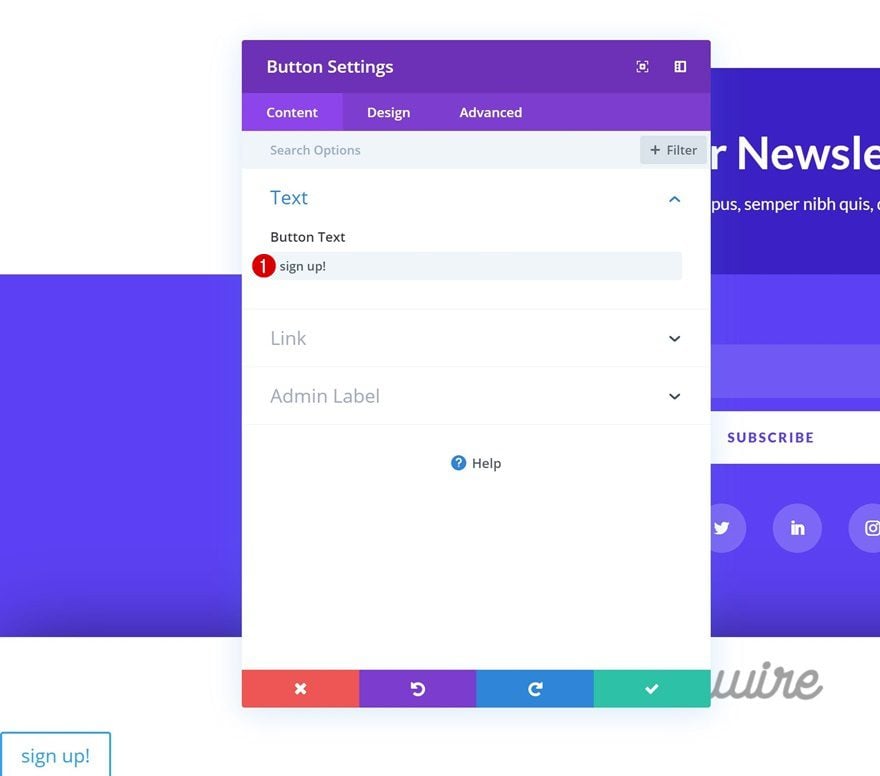
Alignment
Then, go to the design tab and change the button alignment.
- Button Alignment: Center
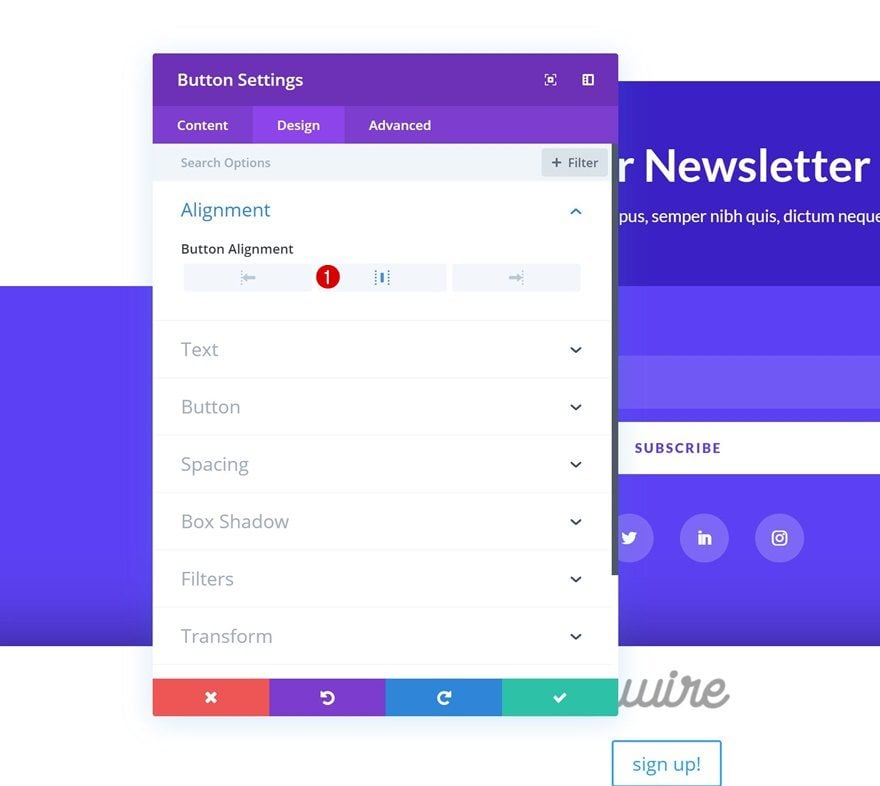
Button Settings
Modify the appearance of the button next.
- Use Custom Styles for Button: Yes
- Button Text Size: 0.8vw (Desktop), 1.4vw (Tablet), 2.1vw (Phone)
- Button Text Color: #ffffff
- Button Background Color: #40eccc
- Button Border Width: 0px
- Button Border Radius: 50px
- Button Letter Spacing: 2px
- Button Font: Lato
- Font Weight: Heavy
- Font Style: Uppercase
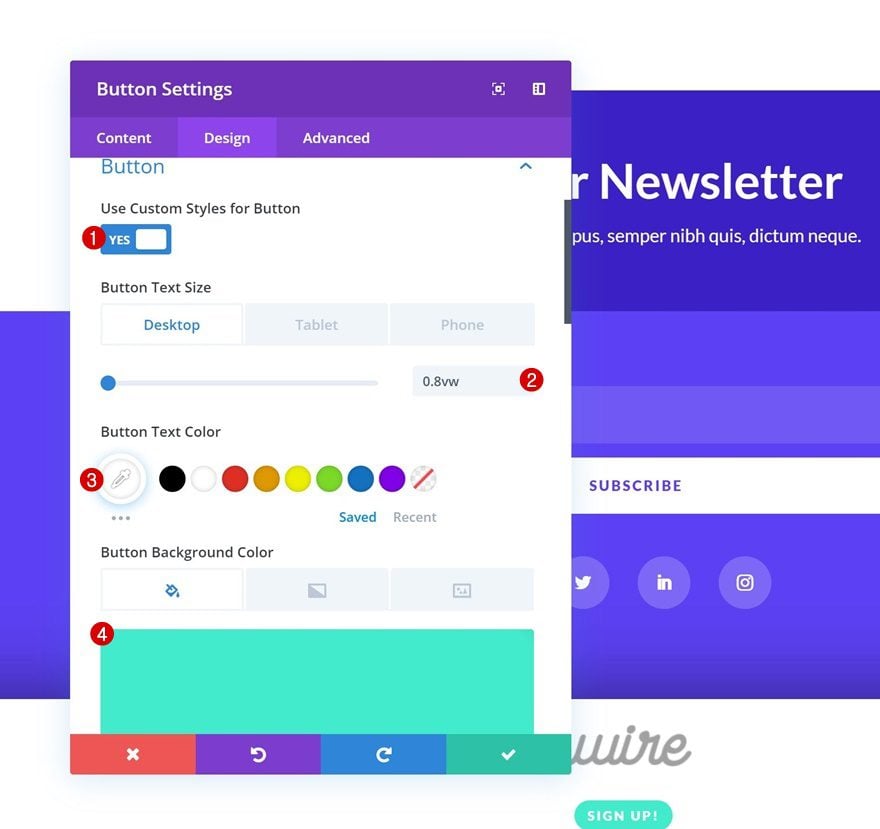
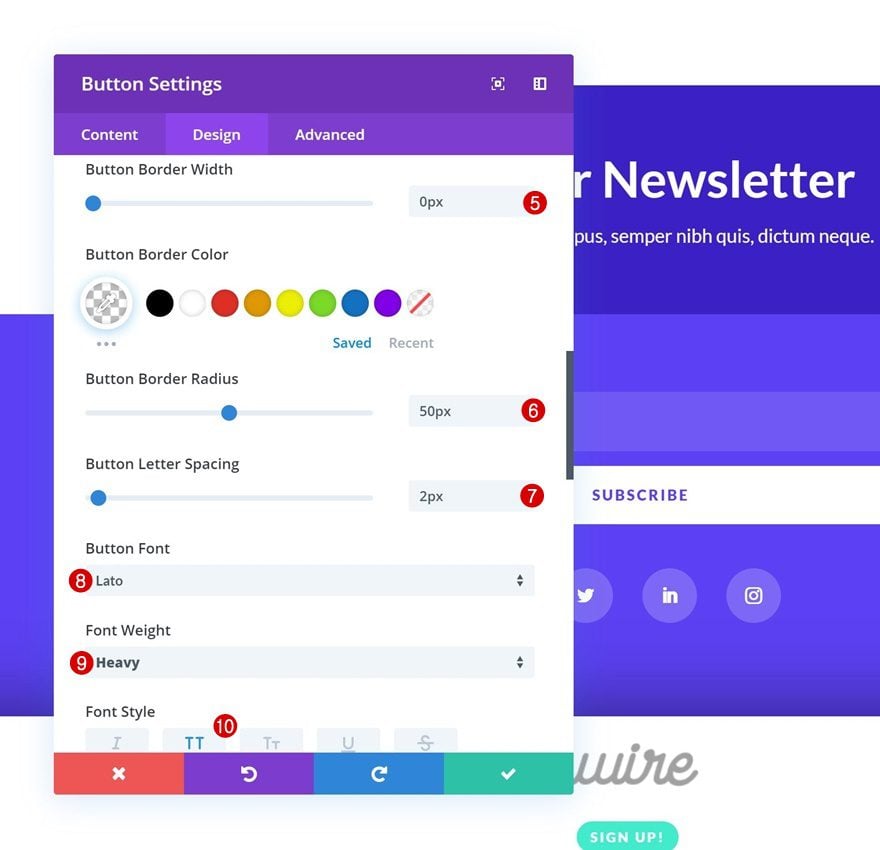
Spacing
And create the shape you want using custom margin and padding values.
- Top Margin: 15px
- Bottom Margin: 15px
- Top Padding: 15px
- Bottom Padding: 15px
- Left Padding: 40px
- Right Padding: 40px
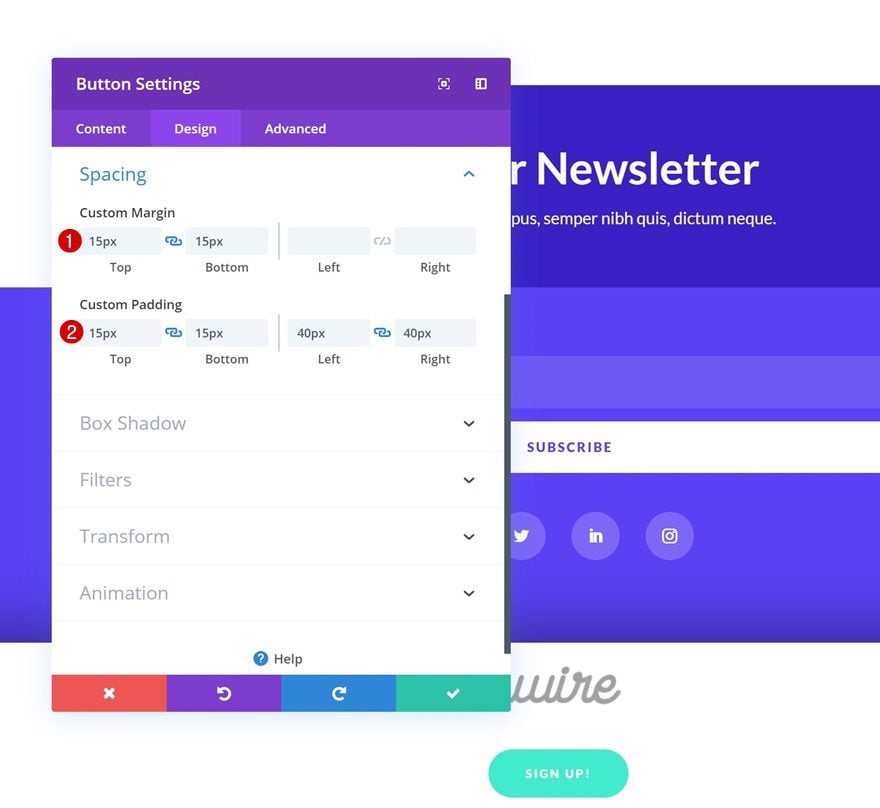
Add Text Module #1
Add Menu Item to Content Box
The next module we need in our swipe menu bar is a Text Module. Here, we’re going to add the page title to the content box.
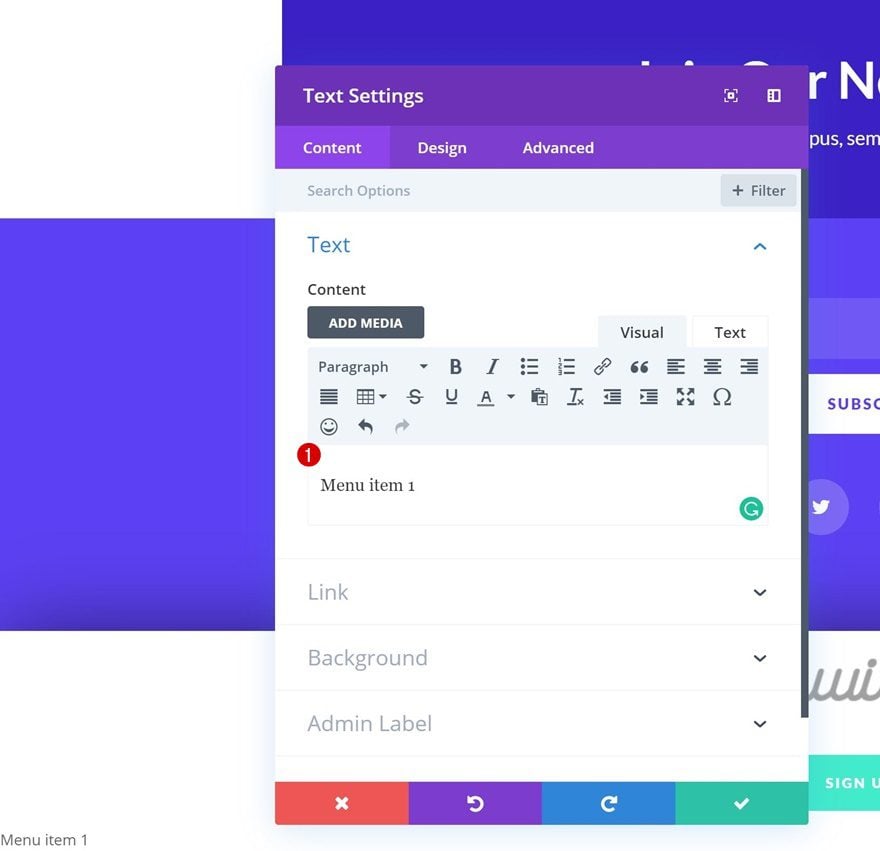
Add Link
Move on to the link settings and add the correct link to the Text Module.
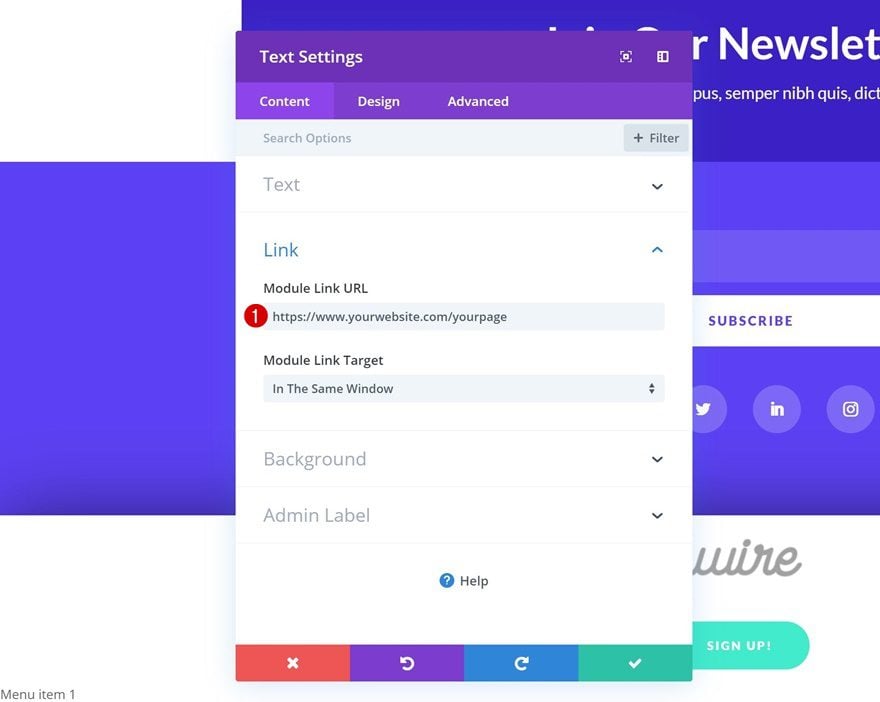
Background Color
Modify the background color next.
- Background Color: #f2f2f2
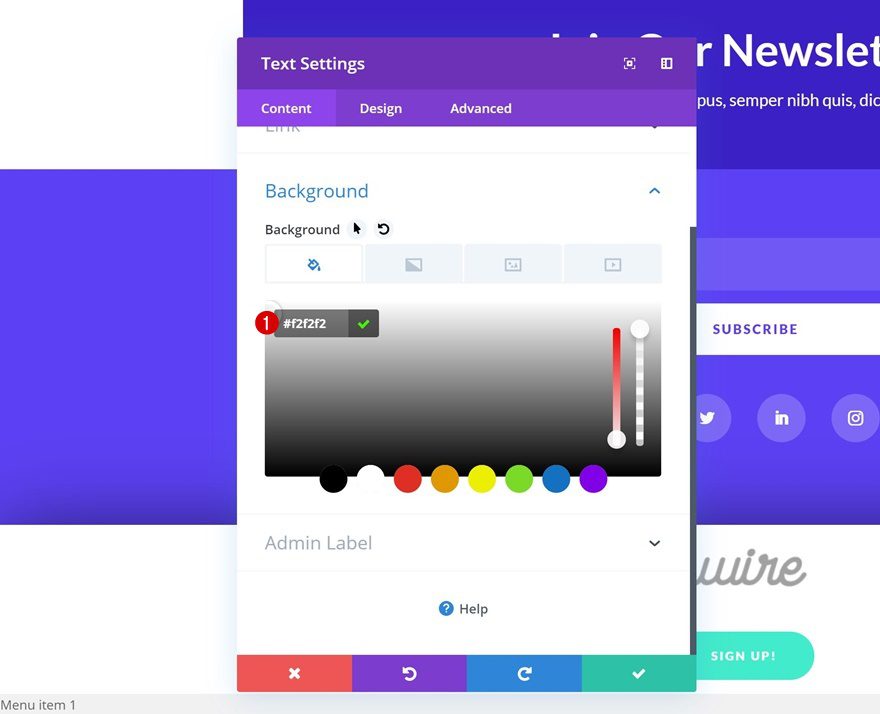
Text Settings
Then, change the text settings.
- Text Font: Lato
- Text Font Weight: Bold
- Text Color: #000000
- Text Size: 0.9vw (Desktop), 1.9vw (Tablet), 2.4vw (Phone)
- Text Orientation: Center
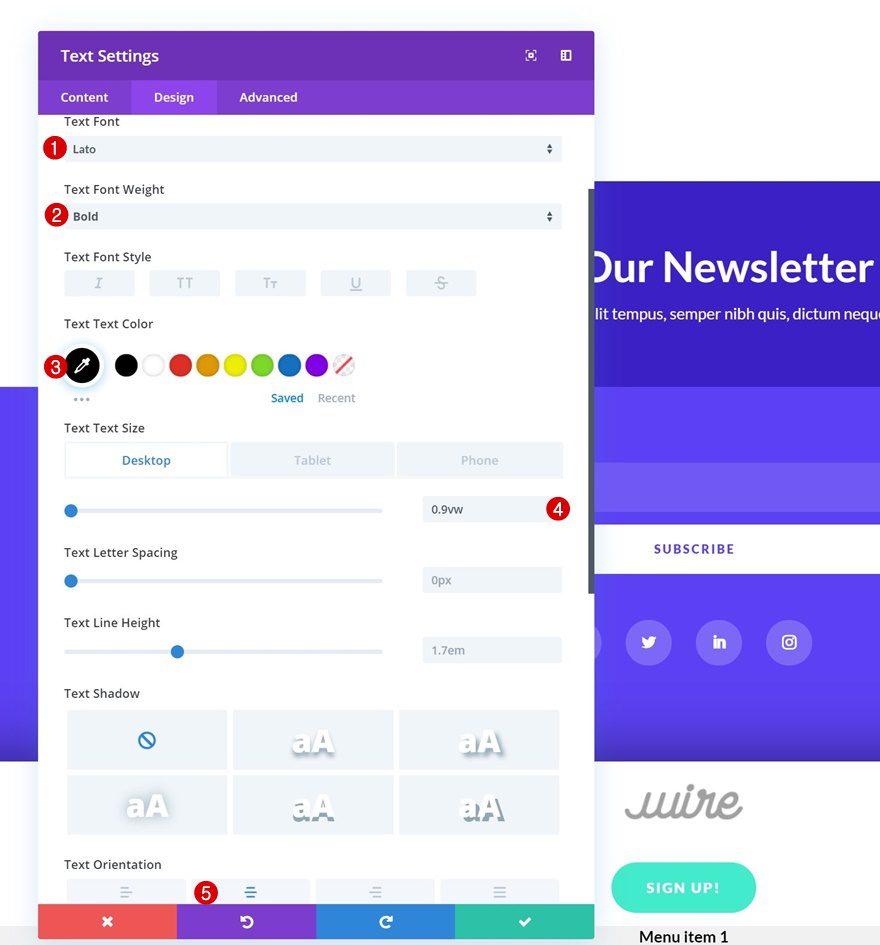
Spacing
And add some custom top and bottom padding to the module as well.
- Top Padding: 30px
- Bottom Padding: 30px
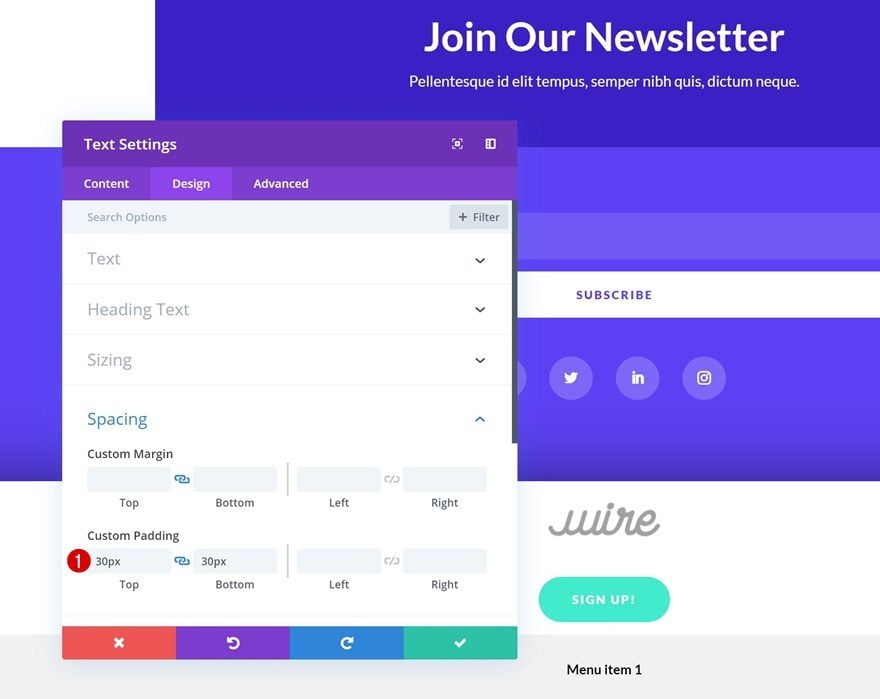
Clone Text Module x5 Times
Once you’re done modifying the Text Module, you can go ahead and clone it 5 times.
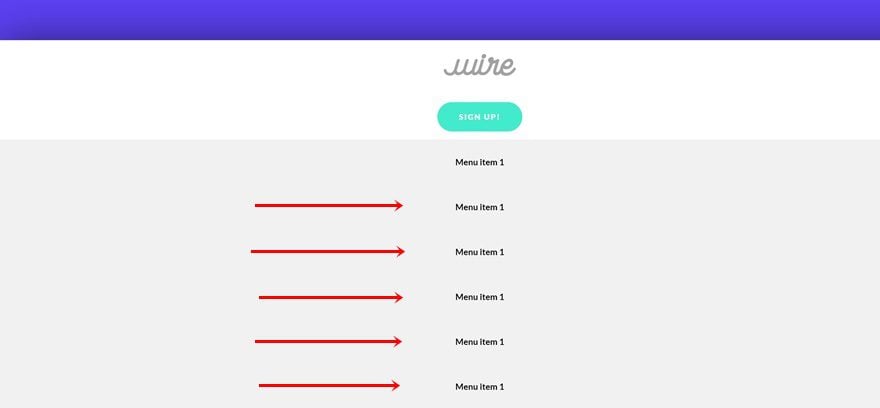
Change Copy
Make sure you change the page title in each one of these duplicates.
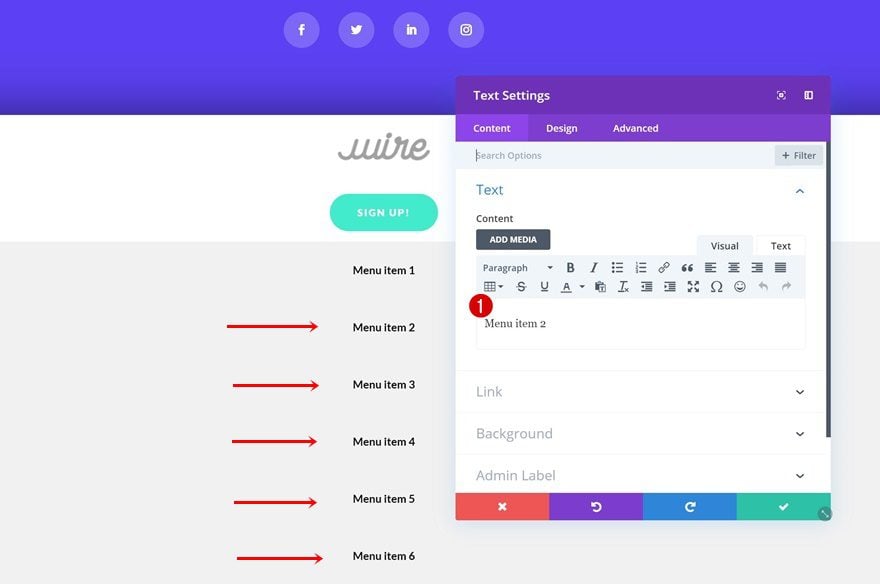
Change Links
Along with the links.
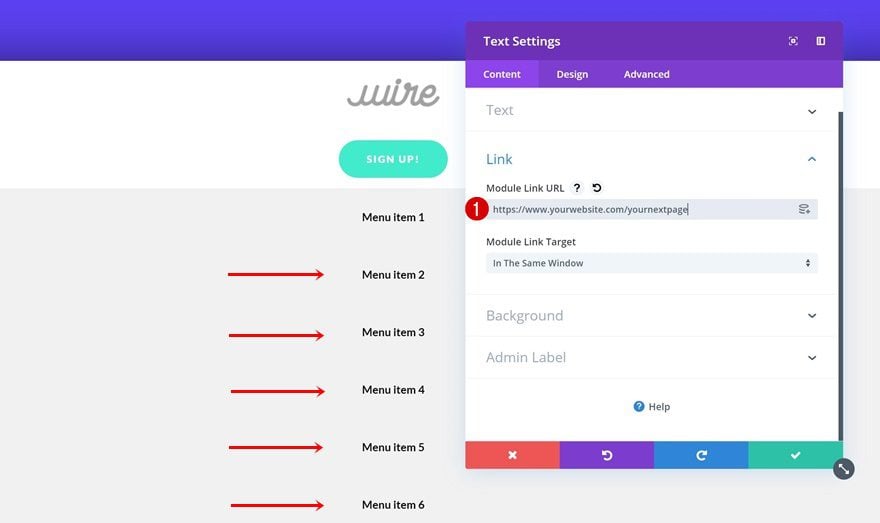
Change Background Colors
Modify the background colors of the second, fourth and sixth menu item next.
- Background Color: #ffffff
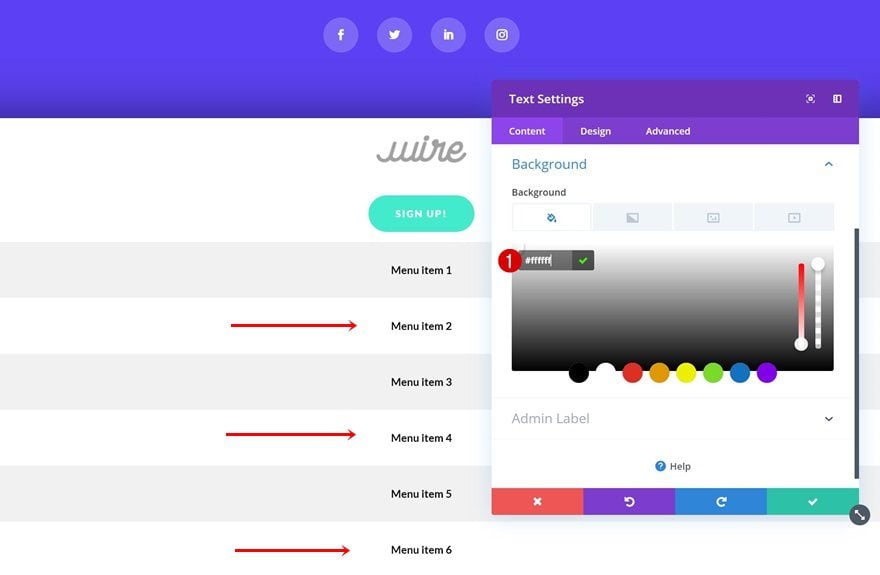
Add Custom CSS to Row
Main Element
Now, to make sure the swipe menu bar sticks to the top of the page, we’ll need to add a few lines of CSS code to the main element of the row.
position:fixed; top: 0px; z-index: 99;
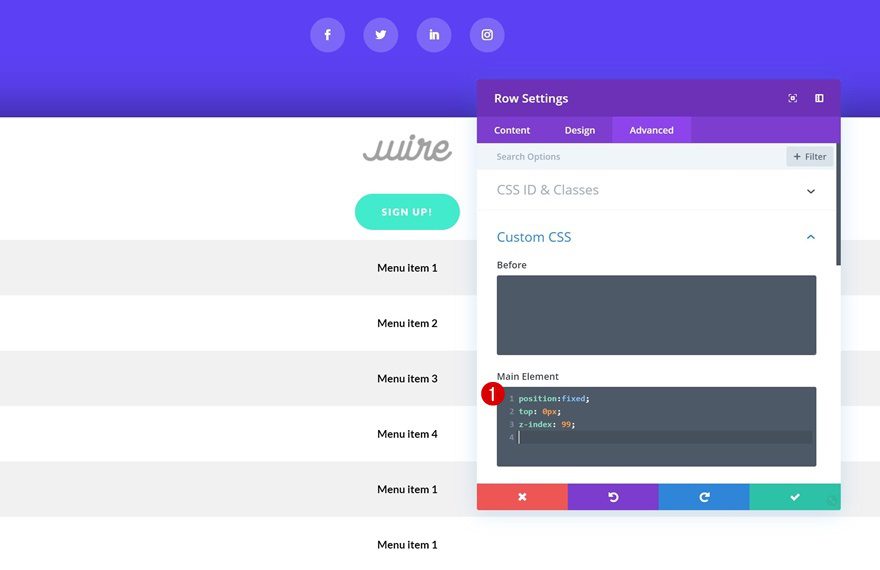
Column Main Element
We’re also turning the column into a grid that allows us to scroll. The percentages that you can see in the CSS code below indicate how much space each one of the modules takes up in the grid. You can modify these values if you want your grid to look differently.
overflow-x: scroll; display: grid; grid-template-columns: 15% 45% 25% 25% 25% 25% 25% 25%;
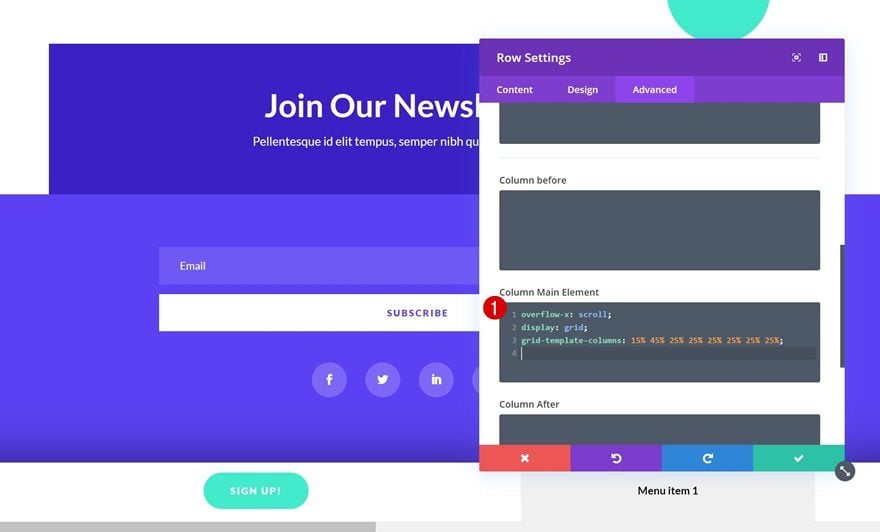
Column CSS Class
And to get rid of the scrollbar, we’re going to add a CSS class to the row as well.
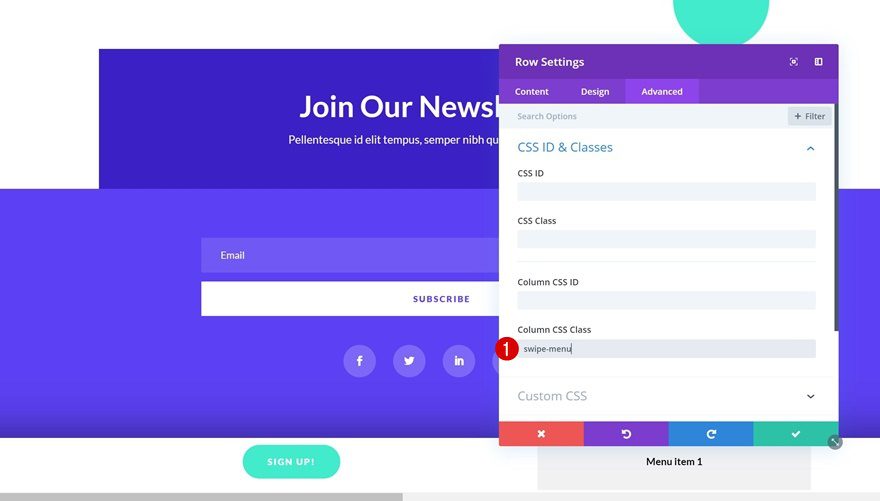
Remove Scrollbar
On the Page
You can remove the scrollbar on the page itself by opening the page settings and adding the following lines of CSS code to the Custom CSS box:
.swipe-menu::-webkit-scrollbar {
display: none;
}

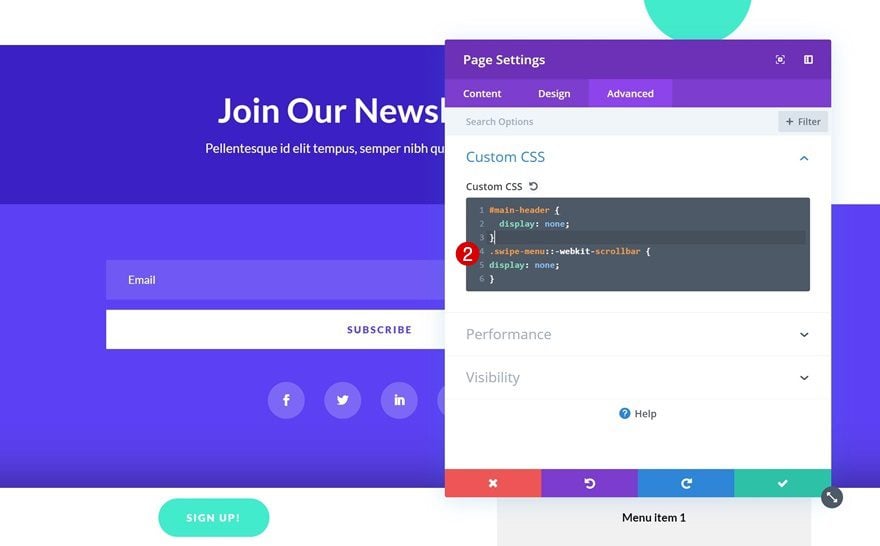
On Entire Website
If you don’t want to repeat the same step of hiding the scrollbar on each page individually, you can also go to the Divi theme options and make the CSS code apply to the entire website by scrolling down the general tab and adding the following lines of CSS code to the Custom CSS box:
.swipe-menu::-webkit-scrollbar { display: none; }
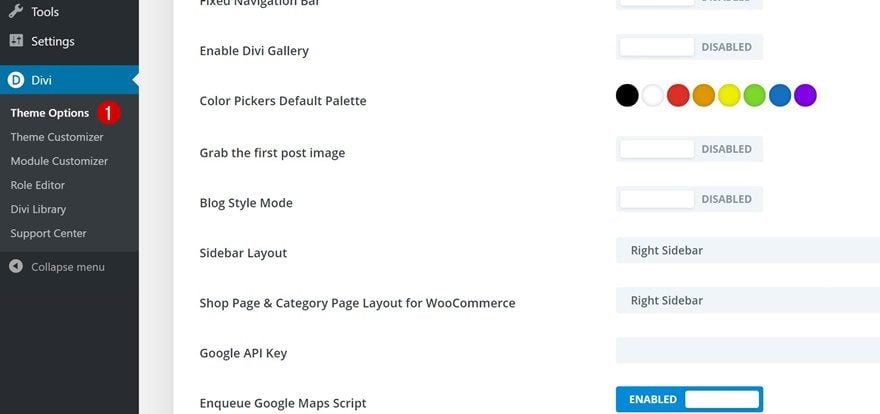
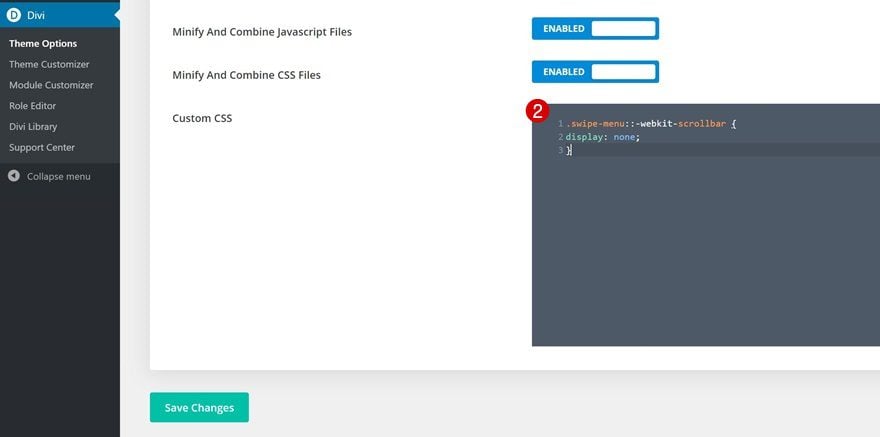
Save as Section as Global Item
Once your swipe menu bar is functioning properly, you can save it to your Divi library as a global item and use it on other pages as well!
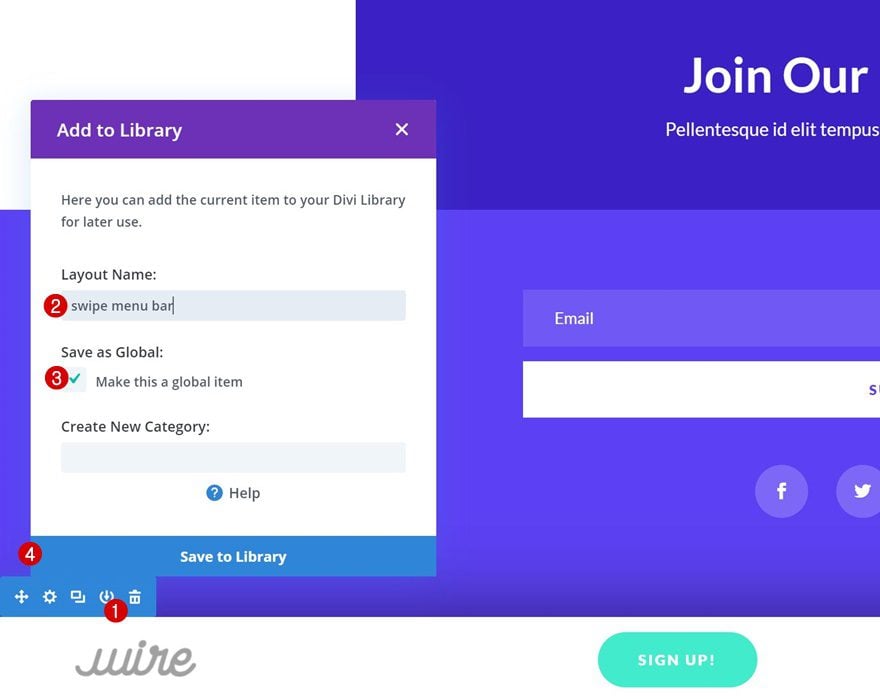
Preview
Now that we’ve gone through all the steps, let’s take a final look at the outcome across different screen sizes.
Desktop

Mobile

Final Thoughts
In this post, we’ve shown you how to create a swipe menu bar for any website you creating using Divi. This is a great technique for adding another dimension to your website. This tutorial is part of our ongoing Divi design initiative, where we try to put something extra into your design toolbox each and every week. If you have any questions or suggestions, make sure you leave a comment in the comment section below!
The post How to Create a Swipe Menu Bar for Your Website with Divi appeared first on Elegant Themes Blog.
